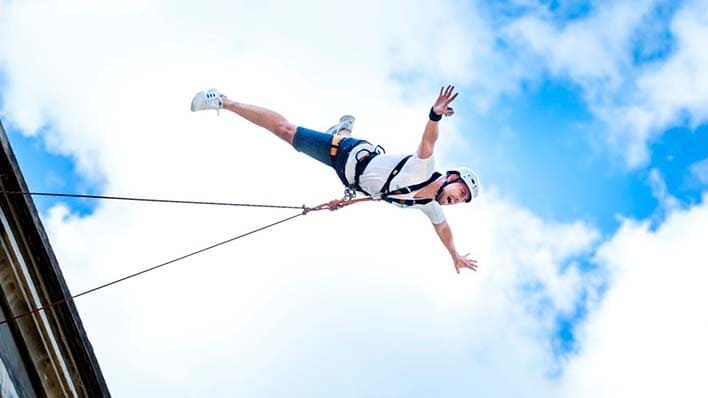Bungee jumping, an adrenaline-pumping activity that involves leaping from a great height while connected to a large elastic cord, might seem inherently dangerous․ However, a meticulous combination of engineering, rigorous safety protocols, and highly trained professionals transforms this extreme sport into a relatively safe experience․ The perception of danger often outweighs the reality, as the industry has developed sophisticated methods to mitigate risks․ Understanding how bungee jumping is made safe involves examining the equipment, the procedures, and the personnel involved in every jump․ This article will explore the multifaceted approach to safety that allows thrill-seekers to experience the exhilaration of freefall with a minimized risk of injury․
The Science Behind the Stretch: Equipment Safety
The safety of bungee jumping hinges on the quality and maintenance of the equipment․ Here’s a breakdown of the key components and their safety features:
- The Bungee Cord: This is the heart of the operation․ Modern bungee cords are typically made from multiple strands of rubber encased in a protective fabric sheath․ The elasticity is carefully calculated based on the jumper’s weight and the jump height․ Regular inspection and replacement schedules are crucial to prevent cord failure․
- Harnesses and Ankle Straps: These secure the jumper to the bungee cord․ They are made from high-strength nylon webbing and are designed to distribute the force of the jump evenly across the body․ Multiple redundant attachment points provide backup in case of a single point failure․
- Carabiners and Connectors: These metal links connect the various components of the system․ They are made from high-strength steel and are regularly inspected for cracks or damage․ Locking mechanisms prevent accidental opening during the jump․
- Jump Platform and Anchor Points: The platform from which jumpers leap must be structurally sound and securely anchored․ Regular inspections ensure its integrity and stability․
Human Element: Training and Procedures
Even with the best equipment, human error can lead to accidents․ Therefore, rigorous training and standardized procedures are essential for ensuring safety․ Here’s a look at the key aspects:
- Jumper Assessment: Before each jump, jumpers are weighed and assessed for any medical conditions that might make bungee jumping unsafe․ This includes checking for heart problems, spinal injuries, and pregnancy․
- Equipment Checks: Trained staff meticulously inspect all equipment before each jump, looking for signs of wear and tear or damage․
- Pre-Jump Briefing: Jumpers receive a thorough briefing on the jump procedure, including how to position their body during the jump and what to expect during the rebound․
- Trained Jump Masters: Experienced and certified jump masters oversee each jump, ensuring that all safety protocols are followed․ They are trained to handle emergencies and to provide clear instructions to jumpers․
Specific Safety Checks
Beyond the general procedures, specific checks are performed before each jump:
- Double-checking all connections and locking mechanisms․
- Verifying the jumper’s weight against the calculated cord elasticity․
- Ensuring the jump area is clear of obstacles․
Regulations and Oversight
The bungee jumping industry is often subject to regulations and oversight by government agencies or industry associations․ These regulations typically cover equipment standards, training requirements, and operational procedures․ Regular inspections and audits help to ensure that operators are adhering to these standards․
FAQ: Common Questions About Bungee Jumping Safety
Here are some frequently asked questions about the safety of bungee jumping:
- Is bungee jumping really safe? While there are inherent risks, the industry has made significant strides in improving safety through rigorous protocols and advanced equipment․
- What happens if the cord breaks? Modern bungee systems have multiple redundant safety features to prevent cord failure․ Harnesses and ankle straps are designed to distribute force and provide backup․
- What medical conditions might prevent me from bungee jumping? Heart problems, spinal injuries, pregnancy, and other medical conditions may make bungee jumping unsafe․ It’s important to disclose any medical conditions to the jump operator․
- How often is the equipment inspected? Equipment is inspected before each jump and on a regular schedule, as mandated by regulations․
Ultimately, the safety of bungee jumping depends on a combination of factors: high-quality equipment, rigorous safety protocols, trained personnel, and regulatory oversight․ While no activity is completely risk-free, the industry has worked hard to minimize the risks associated with this exhilarating sport․ As long as you choose a reputable operator and follow their instructions, bungee jumping can be a thrilling and relatively safe experience․

